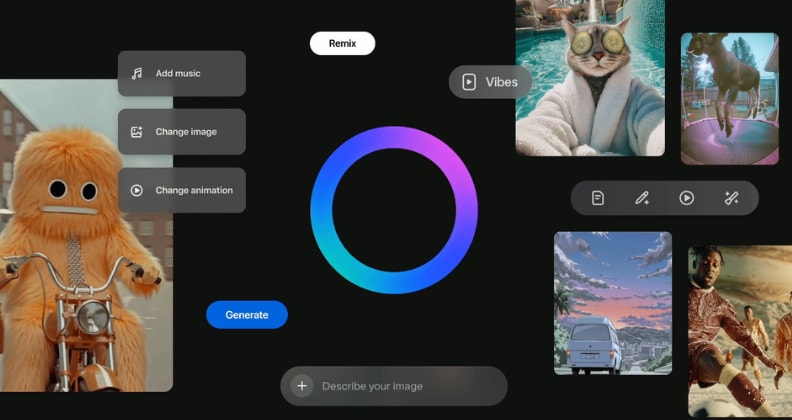Advertising
From Pink Slips to Silent Sidelining: Inside adland’s layoff and anxiety crisis

Meta today unveiled Vibes, a new AI-generated short-form video feed inside the Meta AI app and on meta.ai that lets users watch, remix and create short AI videos — a move that mixes creator tools, platform distribution and fresh controversy about AI content.
Why Vibes matters
Meta built Vibes as a dedicated feed of short AI-generated clips that live inside the Meta AI app and on meta.ai. Users can browse a personalized stream, start a new clip from scratch, remix existing videos from the feed and cross-post to Instagram and Facebook formats like Reels and Stories. That combination of creation + distribution is what makes Vibes notable for creators and brands: it’s not only a generative tool, it’s a new channel inside Meta’s ecosystem.
What Vibes does — features at launch
AI-first short videos: The feed is populated with short clips generated by Meta’s video models; creators and communities can contribute AI creations and remix others’ clips.
Creation and remixing tools: Users can start from scratch, upload existing media to be transformed, or remix items inside the Vibes feed — then share natively or cross-post to Instagram/Facebook.
Distribution integration: Meta positions Vibes as part of the Meta AI product stack and a potential pipeline to Instagram and Facebook distribution, which could increase reach for AI-driven content without leaving Meta’s apps.
Early reactions: cautious interest and sharp criticism
Tech press and creator communities reacted quickly. Some outlets praised Meta’s experimentation with short-form generative video; others were blunt — calling much of the early output “AI slop” and warning the feed could flood platforms with low-quality, synthetic clips. That skepticism is echoed across creator forums and Reddit threads where users question quality, reuse of training data and overall demand for fully AI-generated short videos.
What creators should test first
Remix for speed: Use Vibes to quickly prototype short promotional clips or social teasers — then polish the best results natively before cross-posting.
Brand safety checks: Because the clips are AI-generated, creators should review outputs for accuracy, rights and brand alignment before publishing. Early commentary suggests quality varies and oversight is essential. TechCrunch
Experimentation, not replacement: Treat Vibes as an ideation and fast-content tool — human editing and creative strategy remain important to avoid the “AI slop” trap.
Policy and legal questions to watch
Meta’s broader AI efforts have already drawn scrutiny about training data and copyright. As Vibes scales, expect renewed questions about source material for model training, potential copyright claims, and moderation of synthetic content — issues already debated across the tech press and social communities. Brands and publishers should monitor terms of use and attribution rules before relying on Vibes at scale.
What this means for platforms and advertising
Meta has framed AI features like Vibes as both product innovation and a business opportunity — part of a push to build creator tools and new ad formats inside Meta’s AI roadmap. If Vibes can be monetized (through creator tools, ads, or studio integrations), it could become another vector for short-form ad units and sponsored AI content inside Meta’s large distribution channels. That aligns with Meta’s recent statements about expanding AI offerings as part of its growth strategy.
Vibes is an audacious experiment: it bundles generative video creation with Meta’s distribution muscle. For creators and brands the immediate playbook is simple — experiment, keep humans in the loop, and treat outputs as drafts that need human supervision. For the industry, Vibes raises familiar but urgent questions about AI quality, copyright and platform moderation that will shape how (and whether) AI-only feeds become mainstream.
From purpose-driven work and narrative-rich brand films to AI-enabled ideas and creator-led collaborations, the awards reflect the full spectrum of modern creativity.
Read MoreLooking ahead to the close of 2025 and into 2026, Sorrell sees technology platforms as the clear winners. He described them as “nation states in their own right”, with market capitalisations that exceed the GDPs of many countries.